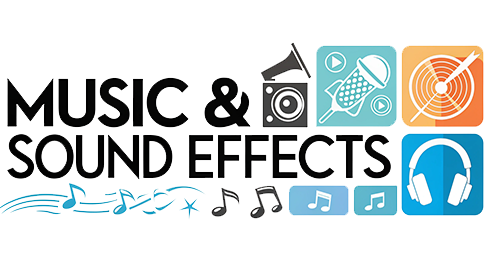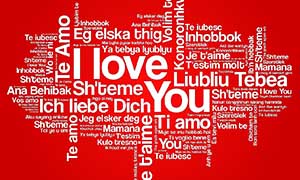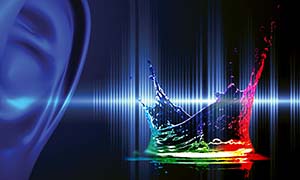May be interested
Your Creative Soundscape: From a Whisper to a Roar – Discover a World of Free Audio Resources
Sound is magic, an invisible energy capable of bringing any project to life: a video, film, presentation, play, computer game, podcast, audiobook, even a simple phone call. It creates atmosphere, evokes emotions, enhances impressions, shapes mood, and makes your work more professional, vibrant, and memorable. But where can you find high-quality and, crucially in today's world, free sounds, music, and effects for your creative projects?
This article will open the doors to the amazing world of free audio resources. We'll explore the variety of sounds, music, and effects available, share secrets of their use, and delve into the technical nuances of working with sound.
Sound: From Noise to Music – The Harmony of Your Creativity
Sound design is a crucial component of any audio-visual or musical project.
Expert opinion:
"Properly chosen sound accompaniment can completely change the perception of a project, amplify the audience's emotional response, and create the desired atmosphere,"
says sound engineer Doc Kane.
It affects information perception, the audience's emotional response, the overall atmosphere of the work, and its professional level.
Main Types of Audio Materials:
- Sound Effects: Short, complete sounds used to create realism, dynamics, and emphasize actions, events, and emotions.
Examples:
nature sounds (rain, wind, thunder, birdsong, stream), city sounds (car horns, crowds, sirens, heels on pavement), technology sounds (creaking doors, phone ringing, keyboard typing, camera shutter), animal sounds (dog barking, cat meowing, lion roaring), human sounds (footsteps, laughter, applause, coughing, sneezing). Sound effects add atmosphere, realism, and dynamics to a project.
Expert opinion:
"Sound effects are the spices in a sound engineer's dish. They add flavor, aroma, and piquancy,"
says sound designer Doc Kane.
- Music: Can be the main element of a project (e.g., in a music video or film) or background accompaniment that sets the mood, evokes emotions, and emphasizes the characters and plot.
Examples:
classical music, jazz, blues, rock, pop, electronic music, background music, ambient, film and game soundtracks.
Expert opinion:
"Music is a universal language capable of conveying any emotion and feeling,"
says composer Anna Christine Nalick.
- Samples and Loops: Short fragments of musical pieces or sound effects that can be used as building blocks to create music, remixes, and sound design. Samples can be recorded from any sound source: musical instruments, voice, nature, technology.
Examples:
individual notes, chords, rhythmic patterns, vocal phrases, instrument sounds (drums, guitar, piano), nature sounds (birdsong, wind), city sounds (car horns, tram bells).
- Loops: Short musical fragments that repeat cyclically, creating a rhythmic or melodic foundation for a musical composition. Loops are often used in electronic music, hip-hop, and R&B.
Expert opinion:
"Samples and loops are powerful tools for sound designers and musicians, allowing them to create unique and original sound compositions,"
notes music producer Richard Noel Marx.
Where to Find Free Sounds, Music, and Effects: From Online Libraries to Recording Studios
The internet offers many resources where you can find and download high-quality, free sounds, music, and effects for your projects.
- Free Sound Libraries:
- Free Music Archives and Platforms:
- YouTube Audio Library:
YouTube offers its own library of audio materials, including music and sound effects. They are available for free use in your videos uploaded to YouTube.
- Online Synthesizers and Sound Generators:
If you need unique sounds or melodies not found in ready-made libraries, you can create them yourself using online synthesizers and sound generators. Many services allow you to create sounds of various instruments, synthesize sound effects, and create music in different styles.
- Recording Your Own Sounds:
If you have a microphone and an audio editor, you can record your own sounds and use them in your projects. This is a great way to create a unique soundscape and add individuality to your work.
How to Choose Sounds and Music: From Genre to Copyright
Choosing sound accompaniment is a crucial stage in any project, influencing how the audience perceives it and the overall atmosphere.
- Genre and Style: Music and sound effects should match the genre and style of your project.
Example:
a romantic comedy would suit light and cheerful music, while a thriller would need tense and dark music.
- Mood and Emotions: Sound accompaniment should evoke the desired emotions in the viewer.
Example:
to create an atmosphere of mystery, you can use sounds of whispers, creaks, and howling wind.
- Tempo and Rhythm: The tempo and rhythm of the music affect the dynamics of the video and emotional perception. Fast and rhythmic music creates a feeling of energy and movement; slow and calm music creates an atmosphere of relaxation and tranquility.
- Duration: Consider the length of your project and choose music and sound effects of appropriate duration.
- Copyright: When using someone else's music or sound effects, make sure you are not infringing on copyright. Free audio materials are usually distributed under a Creative Commons license, which may impose certain restrictions on their use (e.g., requiring attribution).
Expert opinion:
"Using music without the copyright holder's permission is a copyright infringement and can lead to serious consequences,"
warns copyright lawyer Cook Alex.
Working with Sound: Technical Nuances and Tips
Expert opinion:
"Working with sound is a true art that requires not only technical knowledge but also a creative approach,"
says sound engineer Doc Kane.
- Audio File Formats: MP3, WAV, AIFF, FLAC, OGG. MP3 is the most common format, supported by most devices and programs. WAV and AIFF are lossless formats used in professional recording. FLAC and OGG are lossless compression formats that provide good sound quality with smaller file sizes.
- Sound Quality: Determined by bitrate and sample rate. The higher these parameters, the better the sound quality.
Example:
an audio file with a bitrate of 320 kbps and a sample rate of 44.1 kHz will have good sound quality.
- Volume: It's important that the sound volume is balanced with the volume of other soundtracks in your project.
- Sound Processing: Audio editors can be used to improve sound quality and create various effects.
Examples of sound processing software:
Audacity, Adobe Audition, Logic Pro X.
- Sound Mixing: The process of combining multiple soundtracks into one.
- Mastering: The final stage of sound processing, which gives it a finished and professional look.
Conclusion: Create with Sound
Sound is a powerful tool that can transform any project into a true work of art. Thanks to the many free audio resources available today, everyone can find and download high-quality sounds, music, and effects to use in their creative work. Don't be afraid to experiment, be creative, and create with sound!


















